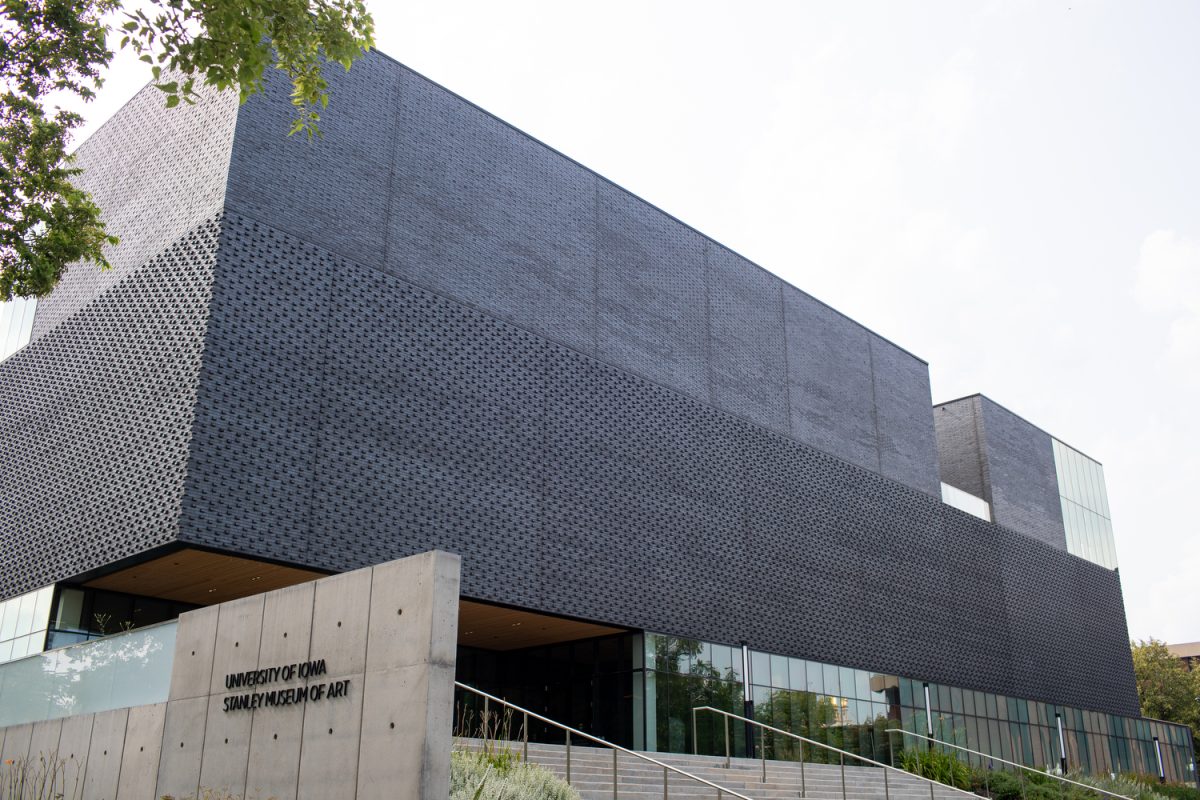The Stanley Museum partnered with the LGBTQ Iowa Archives & Library to host a storytime on the morning of Saturday, July 22, reading “Red: A Crayon’s Story” by author Michael Hall.
The book tells the tale of a blue crayon mislabeled as red, and the struggles the crayon faces because of that. The reading was followed by a scavenger hunt throughout the museum that families participated in to win prizes.
This event was the first collaboration between Stanley and the LGBTQ Iowa Archives & Library, creating a new environment and experience for everyone involved. Outreach coordinator at the archives Zach Morris, and curator of learning and engagement at the Stanley Kimberly Datchuk, worked together in order to bring the event to life.
“I think the Stanley Museum of Art provides a lovely atmosphere,” Morris said. “People can come in and listen to the storytime, then go upstairs and appreciate wondrous art.”
The archive aims to increase community outreach to kids, students, and adults alike by creating a diverse range of opportunities so that they can reach a diverse range of people, especially those who have not yet heard about the organization.
“We want spaces for queer and trans and questioning kids and teens, and this event is one way to do that,” Morris said.
Morris said an important part of their job is ensuring that an event like this reaches their target audience. This storytime targeted a younger crowd, so advertising in the correct spaces was key in creating the event.
Another point of consideration in the planning of the event was gauging how the younger audience was already being served in the community to create space for their event to serve its own purpose, Datchuk said.
RELATED: Punk-rock goes philanthropic: Iowa City artists perform in support of local charities
While storytime events are a common activity for youth in the Iowa City community, the museum wanted to add a twist.
“We wanted to see how we could make this unique, so we’re having the book reading and then a special scavenger hunt with our collection in the galleries [that were] focused on the themes in the book,” Datchuk said.
Both the museum and the archive focused heavily on making an enjoyable and welcoming environment in order for the storytime to be successful.
Datchuk said that she wants people to enjoy being at a museum in a new way.
“I hope it kind of opens eyes to what a museum can be,” she said. “I think often the stigma around museums can be that they’re kind of stuffy, but it can be a fun place.”
Part of that fun is the story itself, which was read aloud by Debra Marqusee, an art teacher and a storyteller at the Stanley. Marqusee has had experience with events like this and said she had been looking forward to it and felt that Stanley was the perfect place for an event like this.
“One of the primary goals and benefits of storytelling is that it can help teach children important lessons about right and wrong, good and bad, and basic morals such as honesty, kindness, and generosity,” Marqusee said.
The storytime lasted take about 15 minutes and was followed by a self-guided tour and scavenger hunt.
“I hope to accomplish these goals by engaging their imaginations and expanding their horizons in which to discover and learn new things about the world around them,” Marqusee said.



